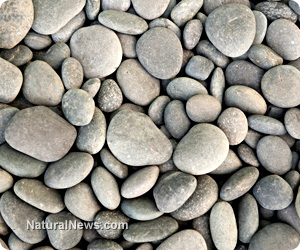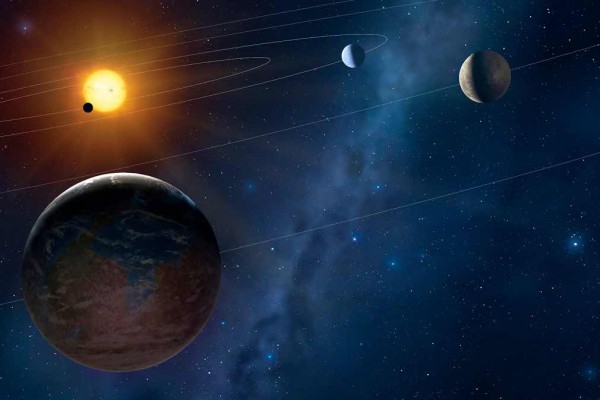Shocking new evidence points out that water could have been present on Earth’s neighboring planet Mars. The evidence suggests that water may not have only present, but the planet could have been awash and overflowing with a network of rivers and streams. NASA’s latest rover, Curiosity, has observed rounded pebbles on the 150-kilometer wide Gale Crater.
These rounded pebbles found on the floor of the crater have a smooth appearance identical to rocks found in Earth’s rivers. Simple erosion explains this effect. As rock fragments are carried along the bottom of a stream, their edges are “sanded” or “rounded,” and ultimately settle in an overlapping fashion. This overlapping alignment of rounded pebbles is now being observed on Mars.
Scientists believe that previous images of the red planet from satellites indicated that water had been active on the planet. These ground discoveries are only confirming what they think is true – that these huge equatorial bowls, craters, and divots were crafted by flowing water.
Upon the discoveries, Dr Rebecca Williams from the Planetary Science Institute announced, “For decades, we have speculated and hypothesized that the surface of Mars was carved by water, but this is the first time where you can see the remnants of stream flow with what are absolutely tell-tale signs.”
Waste deep streams could have been present
The pebbles in Gale Crater were first discovered in September of 2012. Their size, ranging from two to 40 millimeters, suggests that wind couldn’t be solely responsible for the pebble erosion. The pebbles were also observed in different layers of dark and light color shades; further pointing out that water may have carried pebbles and settled them in slow layers over time.
To bolster this evidence, the rover’s remote sensing laser detected a mineral called feldspar, which on Earth, quickly crumbles and dissolves in moving water. Scientists believe that the water must not have been more than waist-deep.
Professor Sanjeev Gupta from Imperial College in London estimates “That the flow velocities were walking pace, approximately – it’s not something we can absolutely reconstruct, but it gives us a rough idea, and these are minimum values.”
Layers of settled conglomerates suggest water activity
They’ve also observed these conglomerates of rock touching one other in an arrangement that points to past river activity. These “clasts” as they call them, are cemented together in a way that suggests they settled due to water flow activity. The specific arrangement of clasts is called imbrications in the scientific community. These arrangements are a true sign of water flow activity, since the elongated pebbles are stacked “like a row of toppled dominos.”
Researchers have been studying the captured images in detail and are writing scholarly reports. Look for their report to show up in Science magazine this year.
Right now, researchers are working to use a Mahli “hand lens”, which will help them study close-up high resolution images of the crater’s bedrock. The lens will help them estimate the probable conditions in which the sediments were formed and help them examine the exact nature of the outcrops in relation to other environmental factors.
The rover is set to continue exploration on the red planet, as scientists try to piece together where the water flowed. They hypothesize that a network of small streams could have spread from the mouth of the Gale Crater and into a place they called Peace Vallis, where loads of rounded gravels have already been discovered.
Opposing scientific views
Opposing scientific views caution that the images captured in mars of rounded pebbles could actually prove that water never existed. The rounded pebbles could have actually been created by volcanic eruptions that hurled molten rock into the air. Frozen in thin air, the round molten droplets could have been formed in Mars’ thin atmosphere, before ever falling to the ground. This process, like water erosion, is observed on Earth.
The best way to know for sure if these pebbles were caused by water activity would be to bring samples back from Mars. In this way, pebbles could be differentiated; water-eroded rocks would be observed solid and volcanically formed rocks would be tested for their internal, porous, sulphurous bubbles.
Sources for this article include:
http://www.bbc.co.uk/news/science-environment-22708902
http://mars.jpl.nasa.gov/msp98/why.html
http://www.nature.com/news/2004/040210/full/news040209-2.html
















